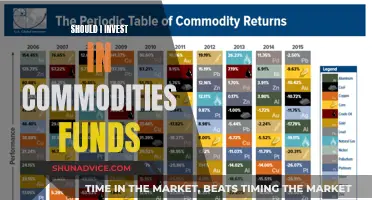
The Pioneer Growth Opportunities Fund invests in equity securities, including common stocks, debt convertible to equity securities, and other equity instruments. The fund focuses on companies that are reasonably priced or undervalued, with above-average growth potential. The fund may invest in securities of any market capitalization, although it may allocate a significant portion of its assets to small companies, defined as those within the market capitalization range of the Russell 2000 Growth Index. Additionally, the fund can invest up to 20% of its total assets in debt securities of US issuers and up to 20% in securities of non-US issuers, with a maximum of 5% in emerging markets. The fund employs a growth at a reasonable price management style, utilizing fundamental research and a bottom-up analytic approach to select stocks.
| Characteristics | Values |
|---|---|
| Share Classes | Class A Shares (PGOFX), Class B Shares (GOFBX), Class C Shares (GOFCX), Class R Shares (PGRRX), Class Y Shares (GROYX) |
| Investment Objective | Reasonably priced or undervalued equity securities with above-average growth potential |
| Investment Types | Common stocks, debt convertible to equity securities, ETFs, depositary receipts, equity interests in REITs, warrants, rights, preferred stocks, debt securities of U.S. issuers, non-U.S. issuer securities, derivatives |
| Market Capitalization | No restriction, but may invest significantly in small companies (approx. $1.6 billion to $5.6 billion) |
| Debt Securities | Up to 20% of total assets, with up to 5% in below investment-grade debt ("junk bonds") |
| Non-U.S. Issuer Securities | Up to 20% of total assets, with up to 5% in emerging markets issuers |
| Derivatives | Used for hedging, substituting securities, and increasing fund returns |
| Securities Lending | Up to 33⅓% of total assets |
| Investment Style | "Growth at a reasonable price" |
What You'll Learn

Equity securities of companies with above-average growth potential
The Pioneer Growth Opportunities Fund invests in equity securities of companies with above-average growth potential. Equity securities represent ownership claims on a company's net assets. They are an important asset class for investment analysis and portfolio management, as they make up a significant portion of many investment portfolios.
The fund's investment adviser considers the equity securities to be reasonably priced or undervalued, with above-average growth potential. The adviser focuses on the quality and price of individual securities, employing fundamental research and an evaluation of the issuer based on its financial statements and operations.
Equity securities can be common stocks, debt convertible to equity securities, or other equity instruments. These include exchange-traded funds (ETFs), depositary receipts, equity interests in real estate investment trusts (REITs), warrants, rights, and preferred stocks.
The fund may invest in securities of any market capitalization, although it may invest a significant portion of its assets in equity securities of small companies, defined as those within the market capitalization range of the Russell 2000 Growth Index (approximately $1.6 billion to $5.6 billion as of March 31, 2011).
By investing in equity securities, the Pioneer Growth Opportunities Fund gains ownership claims on the net assets of companies with above-average growth potential. This type of investment plays a crucial role in portfolio management and can offer superior returns compared to government bills and bonds.
SP 500 Index Funds: A Smart Investment Choice
You may want to see also

Debt securities of US issuers
Debt securities are financial instruments that contain a promise from the issuer to pay the holder a defined amount by a specific date—the point at which the debt security matures. They are negotiable instruments, meaning that ownership can be easily transferred from one party to another.
The Pioneer Growth Opportunities Fund may invest up to 20% of its total assets in debt securities of US issuers. The fund generally acquires investment-grade debt securities, but it may invest up to 5% of its net assets in below-investment-grade debt securities (known as "junk bonds") and below-investment-grade convertible debt securities.
Debt securities are also known as fixed-income securities because they generate a fixed stream of income from interest payments. They are considered less risky than equity investments because the borrower is legally required to make these payments. However, the true risk of a particular security will depend on its specific characteristics. For example, a company with a strong balance sheet operating in a mature marketplace may be less likely to default on its debts than a startup company operating in an emerging marketplace.
The interest rate for a debt security will depend on the perceived creditworthiness of the borrower. Companies with higher credit ratings will usually offer lower interest rates on their debt securities and vice versa.
Bonds are common types of debt securities, including government, corporate, municipal, collateralized, and zero-coupon bonds. Debt securities can also come in the form of collateralized securities, such as collateralized debt obligations (CDOs), collateralized mortgage obligations (CMOs), and mortgage-backed securities (MBSs).
Maximizing Cigna HSA Investment: A Guide to Smart Savings
You may want to see also

Securities of non-US issuers
ADRs are negotiable certificates that represent ownership of American Depository Shares (ADSs), which in turn represent an interest in a foreign company's shares. ADSs are priced at a rate more typical for US markets and trade in US dollars, clearing through US settlement systems.
There are two types of ADRs: sponsored and unsponsored. Sponsored ADRs are agreements made directly with a US depositary bank, while unsponsored ADRs are set up without the cooperation of the foreign issuer, often by a broker-dealer.
A recent US court decision, Stoyas v Toshiba Corp, found that a foreign issuer could be liable under US securities laws for the sale of its securities in the US, even if the company was not directly involved in the sale. This means that foreign companies may now be exposed to liability under US securities laws when they previously would not have been.
There are several recommendations that foreign issuers can follow to limit their exposure to liability under US securities laws, including:
- Refraining from listing ADRs on a US exchange
- Monitoring and managing relationships with depositories
- Refusing to provide consent or a letter of "non-objection" to an "unsponsored" ADR program
- Avoiding participation in sales of large blocks of securities to an investment bank
- Publishing a formal dissociation from an "unsponsored" ADR program
- Limiting interaction with investment banks and potential ADR investors
The US Securities Act of 1933 and the Securities Exchange Act of 1934 are two important laws applicable to companies wishing to access the US capital markets. The Securities Act requires companies offering and selling securities in the US to register the transaction with the Securities and Exchange Commission (SEC) or follow requirements for an exemption. The Exchange Act requires companies to register classes of equity securities to list on a national securities exchange in the US or if certain asset and shareholder thresholds are exceeded.
Foreign private issuers—companies that qualify as having 50% or less of their outstanding voting securities held by US residents—are provided specific rules and exemptions by the SEC. These include:
- The ability to present financial statements using US GAAP, International Financial Reporting Standards (IFRS), or home country accounting standards with a reconciliation to US GAAP
- Exemption from the proxy rules under Rule 3a12-3(b) of the Exchange Act
- Exemption from beneficial ownership reports required by Section 16(a) of the Exchange Act
- Exemption from the disclosure requirements of Regulation FD
- Use of particular registration and reporting forms
- A special exemption from registration under the Exchange Act
Balanced Funds: Smart Investment or Risky Business?
You may want to see also

Derivatives
The Pioneer Growth Opportunities Fund may use derivatives for a variety of purposes. This includes hedging against adverse changes in the market prices of securities, interest rates, or currency exchange rates. Derivatives can also be used as a substitute for purchasing or selling securities, and to increase the fund's return as a non-hedging strategy that may be considered speculative.
Using derivatives can increase fund losses and reduce opportunities for gains when market prices, interest rates, or the derivative instruments themselves behave in a way not anticipated by the fund. Derivatives may also increase the volatility of the fund's net asset value and may have a leveraging effect. They can be difficult to sell, unwind, or value, and the counterparty may default on its obligations.
The fund's use of derivatives is not without risk. Changes in the value of a derivative may not correlate well with the referenced asset or metric, and the fund may have to sell assets at inopportune times to satisfy its obligations. New regulations could also impact the derivatives market, making derivatives more costly or limiting their availability.
Off-the-Chain Fund: Unlocking Investment Opportunities
You may want to see also

Cash or other short-term investments
The Pioneer Growth Opportunities Fund may hold cash or other short-term investments. Short-term investments are typically held for under a year and are perfect for immediate financial goals. They are low-risk, highly liquid assets that can be converted into cash quickly. They are ideal for businesses that need fast access to capital and for individuals who have frequent short-term financial obligations to fulfill.
- Certificates of Deposit (CDs)
- Short-term mutual funds
- Money market accounts
- Peer-to-peer lending
- Commercial papers
- Government treasury bonds
Short-term investments are an excellent option for those who require immediate finance and want to avoid the risk of loss. However, it's important to note that they usually offer lower returns compared to long-term investments.
A Guide to Investing in US Index Funds from Australia
You may want to see also
Frequently asked questions
The fund primarily invests in equity securities of companies that are reasonably priced or undervalued, with above-average growth potential. This includes common stocks, debt convertible to equity securities, and other equity instruments such as exchange-traded funds (ETFs), depositary receipts, equity interests in real estate investment trusts (REITs), warrants, rights, and preferred stocks.
The fund may invest in securities of any market capitalization, although it often invests a significant portion of its assets in equity securities of small companies, which it defines as those within the market capitalization range of the Russell 2000 Growth Index (approximately $1.6 billion to $5.6 billion as of March 31, 2011).
There are various risks associated with investing in the fund, including market risk, growth style risk, portfolio selection risk, small-size companies risk, debt securities risk, risks of non-U.S. investments, market segment risk, derivatives risk, leveraging risk, portfolio turnover risk, and securities lending risk.







